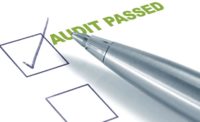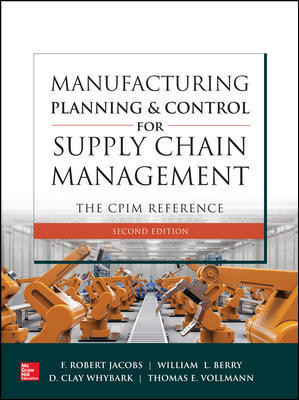
Employee training should be the cornerstone of any program designed to achieve certification to international standards such as ISO17025 or Nadcap. Source: Magnum Quality Resources
If expansion into new markets is part of a company’s plan for growth, it may be faced with new or additional demands on its quality program to facilitate that growth. More and more companies, for example, are requiring laboratory certification as a prerequisite for doing business. Certification provides the customer with documented assurance that a quality system is in place and being checked periodically by a third party to ensure conformance. Among the standards many businesses may be required to meet are ISO9001, ISO 17025 and NADCAP (National Aerospace and Defense Contractors Accreditation).
ISO 9001 is an important standard to companies whose work is considered production since high-volume inspection work is often judged on the same criteria as manufacturing operations. Most non-destructive testing (NDT) laboratories need to be certified to ISO 17025, the laboratory accreditation standard that correlates well with the types of inspections and tests performed by NDT organizations. NADCAP is important because a large amount of NDT work is currently done on aerospace and defense related products. Contemplating certification to one or more of these current standards starts with a review of a company’s training program.
Training, Competence and Awareness
Employee training is essential for NDT laboratories regardless of which of the many NDT tests they perform. Operating the equipment, performing the tests and evaluating the results are all part of the daily inspection process. Most important, some NDT tests require a high level of skill and expertise when it comes to interpretation of results, such as in radiography and ultrasonic testing. Both training and evaluation for employee competence are absolutely essential. When implementing a quality program for the first time, no matter which one, this is a good place to start.General Training Requirements
NDT labs that are not seeking formal quality system certifications may find ASTM E 1212-04, Standard Practice for Quality Management Systems for Non-destructive Testing Agencies, useful as a guideline for developing a Quality Management System. Paragraph 7.3 spells out the requirements for employee selection and training. It states that, “a training program shall be maintained to ensure employees develop and retain skill competence.” It continues by saying that, “NDT personnel shall be qualified in accordance with a nationally recognized NDT personnel qualification practice or standard such as ASNT-CP-189, ASNT/SNT-TC-1A, NAS 410 or a similar document.” The American Society for Testing Methods (ASTM), which provides testing methods for almost every industry, provides guidance for all accepted NDT techniques and test methods.American Society for Non-Destructive Testing and Other Sources
The American Society for Non-destructive Testing (ASNT) is the primary source of training requirements for NDT personnel. Non-destructive testing encompasses more than 30 test methods and techniques, most of which come from ASTM. ASNT provides training guides and certification for most of them. There are several commercial schools and organizations, as well as community colleges and aviation schools around the country, that provide NDT training and certification. These programs can be easily located on the Internet and in magazines and other periodicals. Today, as in the past, the U.S. military provides training and releases hundreds of qualified technicians into the civilian job market every year.ISO/IEC 17025-2005 and ISO 9001:2008 Requirements
Many customers require that their sources for NDT inspections have laboratory accreditation to ISO 17025. Unlike ISO 9001, which is focused on organizational quality and excellence, ISO 17025 is all about individual competence and proficiency. Because of the unique requirements for demonstrating competence in this standard, employee training takes on a whole new meaning and a new set of guidelines if accreditation is required. And these same requirements extend to both trainees and contract employees, which means that work performed by a trainee, an experienced employee or a person contracted to perform the work, all must show the same level of training and competence.The ISO 17025 standard requires that the organization ensure the competence of all personnel who operate equipment, perform tests, evaluate results and sign test reports. In a typical NDT lab, that’s just about everybody. And competence only can be achieved through documented training and documented work experience. ISO 17025 spells this out by stating that personnel performing specific tasks shall be qualified on the basis of education, training, experience and demonstrated skills.
The ISO 17025 standard specifically calls out non-destructive testing as a technical area where personnel performing specific tasks must hold certification. Laboratory assessors with access to Level I, II & III training requirements spelled out in the American Society for Nondestructive Testing (ASNT) training guides will want to see either certification of employees or internal training that conforms to the same requirements in the ASNT guide.
Additionally, ISO 17025 requires NDT labs to formulate goals for education, training and skills of NDT personnel. This includes a certain amount of planning and documentation. The standard goes on to say that personnel responsible for opinions and interpretations should have training, experience, qualifications and:
Finally, ISO 17025 requires NDT labs to evaluate and document the effectiveness of all training actions and keep detailed training records and certifications for all employees engaged in testing activities. ISO 9001, while not as stringent as ISO 17025, still requires evidence of a training program, training performed, measurement of the effectiveness of the training and an evaluation of the competence of each employee.
NADCAP Requirements
NDT labs that plan to go beyond ISO certification and seek NADCAP certification face even more stringent requirements. National Aerospace Standard NAS 410 Revision 3 spells out a complete set of training and training documentation requirements for NDT. NADCAP training requirements for NDT levels I, II and III, and the required documentation, are the most stringent. NADCAP (through NAS 410) spells out very specific training, testing and evaluation requirements. Likewise, NADCAP documentation requirements also are very strict and demanding.Structuring Your NDT Training Program
Getting started is the most difficult part of any program. A solid and effective training program should start with these first basic steps.Job Descriptions: Both ISO standards require written job descriptions for every job category. Job descriptions, when done well, are a guideline for what training may be required to fill the job requirements listed. Training requirements, training performed and employee evaluations should all closely follow what is documented in the job description.
Long Range Planning: What is the purpose of your training program? Are you seeking ISO or NADCAP certification? These are questions that should be asked up front. The types of training, and the degree of documentation, needs to match long-term plans right from the start.
Resources : What training resources are needed? Where can they be obtained? Will it be in-house training or training by consultants or professional trainers? What kind of reference materials will be needed? What will be on hand for training and who will control it?
Equipment Training: Don’t forget to train employees on the correct ways to use equipment. Safety concerns and calibration requirements are all important.
Theory: NDT training always requires discussion on theory. Why do materials exhibit the properties they do? What is magnetism and how does it work? NDT technicians need this training and all ASNT training programs are loaded with it.
Performing the work: The most obvious element is how to perform the work, including how to read a specification. Often times, specifications include several options, known as methods within techniques and techniques within methods. Watch out for these because NDT customers are often very specific as to the technique and/or method they have specified.
Quality: Product quality requirements, process quality requirements and the organizations goals for quality and quality certifications.
Safety: Several NDT methods and techniques contain potentially harmful attributes. Gamma rays, dangerous chemicals and work in confined spaces all need to be addressed as necessary.
Achieving laboratory certification to any of the standards discussed here as required by current or future customers can be a daunting task. Getting management buy-in to the process of upgrading a laboratory’s skill set and competence is essential. Fortunately, there a lot of resources out there to help. A well-planned and executed training program will pay off in both the short and long run.NDT

